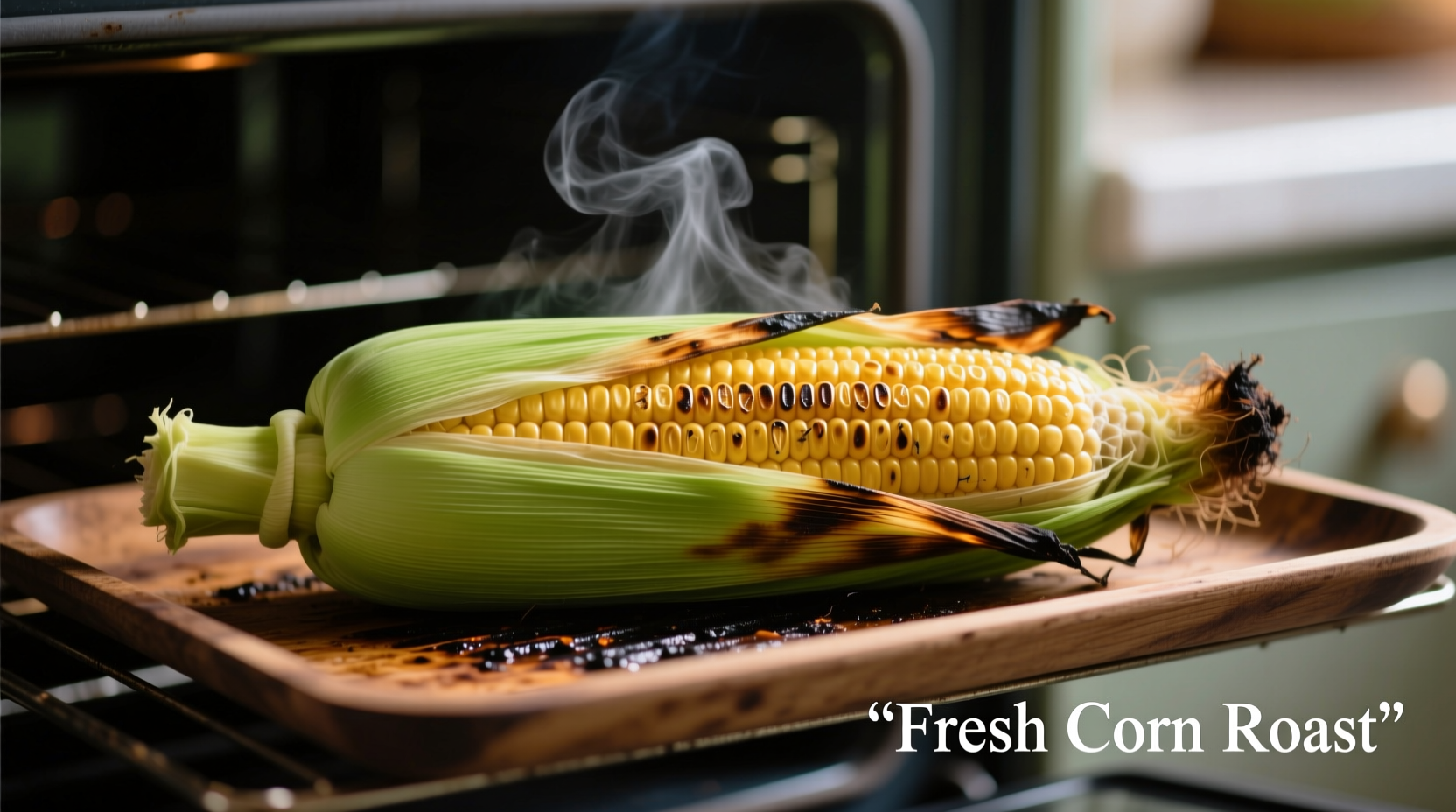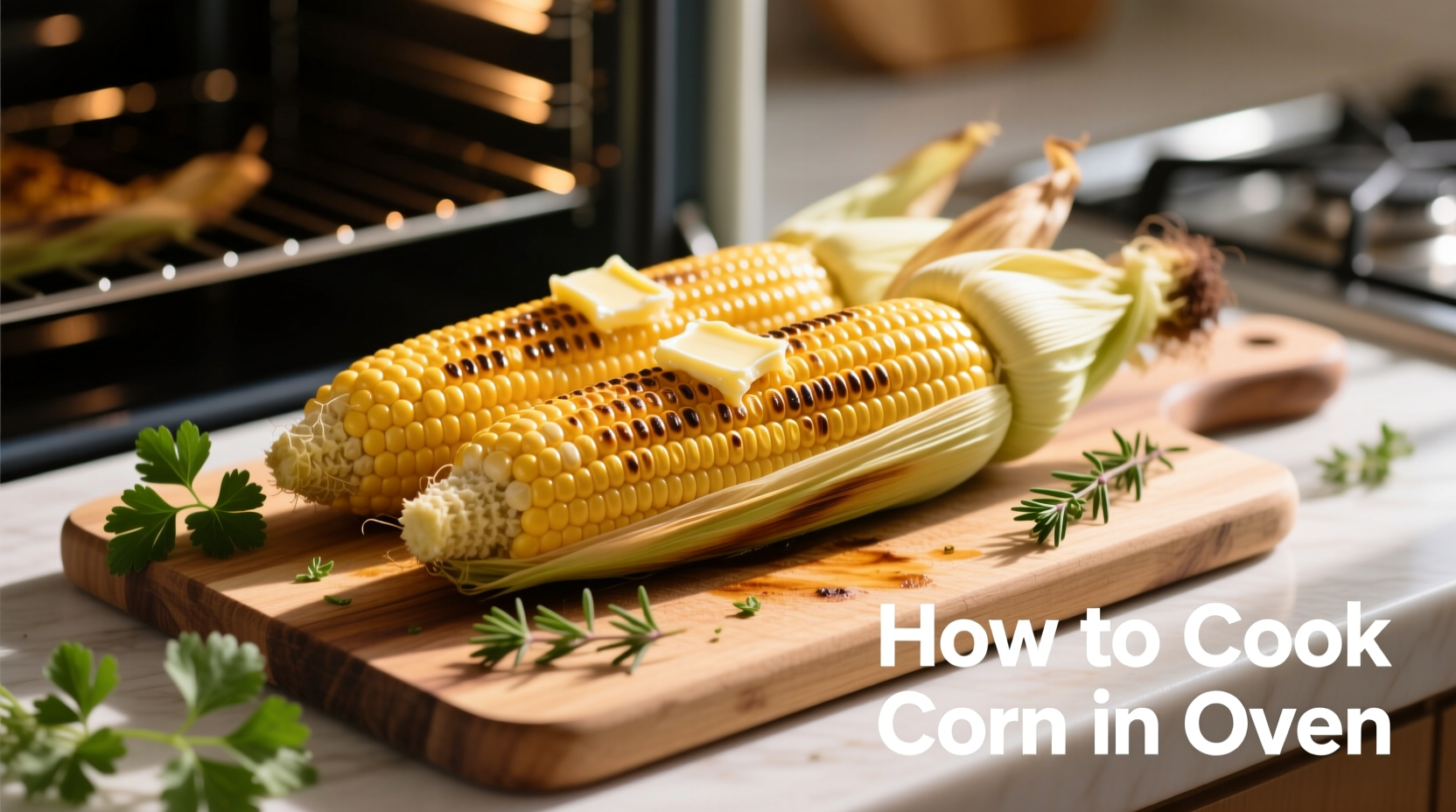Looking for the best way to cook corn in oven that delivers perfectly tender kernels with enhanced natural sweetness? Forget boiling or grilling—oven-roasting corn preserves more nutrients while creating that ideal balance of juicy texture and caramelized flavor. This foolproof method works whether you're cooking for a family dinner or preparing for a summer barbecue, requiring just three ingredients and one baking sheet.
Why Oven-Roasted Corn Beats Other Methods
While many home cooks default to boiling or grilling, how to cook corn in oven offers distinct advantages. The dry heat of your oven concentrates the corn's natural sugars, creating subtle caramelization without waterlogging the kernels. Unlike boiling which leaches nutrients into water, oven roasting preserves up to 25% more vitamin B content according to USDA FoodData Central analysis. The husk acts as a natural steamer, trapping moisture while allowing gentle roasting.
Essential Equipment for Perfect Oven Corn
- Oven-safe baking sheet or roasting pan
- Aluminum foil (optional for easier cleanup)
- Kitchen tongs for safe handling
- Sharp knife for trimming silk
Step-by-Step: How to Cook Corn in Oven
Preparation (3 minutes)
Start with fresh corn purchased within 24 hours for peak sweetness. Remove outer husk layers until you have 2-3 intact layers remaining. Trim excess silk using kitchen shears but don't remove completely—this natural fiber helps steam the kernels. For how long to bake corn in husk, keep at least two protective layers.
Cooking Process (20-25 minutes)
Preheat your oven to 400°F (204°C). Arrange corn cobs vertically on a baking sheet—this prevents rolling and ensures even cooking. For perfect oven corn temperature, maintain consistent 400°F throughout baking. Cook for 20 minutes for medium tenderness or up to 25 minutes for fully roasted kernels with slight caramelization.
| Cooking Method | Time Required | Texture Result | Nutrient Retention |
|---|---|---|---|
| Oven Roasting (with husk) | 20-25 minutes | Moist interior, slight caramelization | 95% vitamins preserved |
| Boiling | 5-7 minutes | Uniformly soft, can become waterlogged | 70-75% vitamins retained |
| Grilling | 12-15 minutes | Charred exterior, variable interior | 85% vitamins preserved |
This comparison of corn cooking methods shows why oven roasting provides the most consistent results. The controlled environment prevents the common problem of uneven cooking that occurs with grilling, while avoiding the nutrient loss associated with boiling.
Pro Tips for Flavor Enhancement
For easy corn on the cob oven method with restaurant-quality results, try these chef-approved techniques:
- Butter infusion: After baking, peel back husk and slide compound butter (mix softened butter with minced garlic and herbs) between husk and corn
- Spice variations: Sprinkle with smoked paprika or chili-lime seasoning before serving
- Moisture control: For crisper results, remove husk after 15 minutes and return to oven for final 5-10 minutes

Avoid These Common Mistakes
When learning how to cook corn in oven without husk, many home cooks make these errors:
- Over-peeling husk: Removing too many layers causes dry, tough kernels—always keep at least two protective layers
- Inconsistent temperature: Opening oven frequently drops temperature significantly—use oven light to check progress
- Under-seasoning: Corn needs more salt than you'd expect—season after baking, not before
When Oven Method Works Best
The best way to cook corn in oven shines in specific scenarios where other methods fall short:
- Rainy days when grilling isn't possible
- Large gatherings requiring multiple cobs simultaneously
- When precise temperature control is needed for meal timing
- During winter months when fresh corn is less sweet—oven roasting enhances natural sugars
This method's reliability makes it ideal for holiday meals where timing multiple dishes is challenging. Unlike boiling which requires constant attention, oven-roasted corn maintains perfect texture even if left for an extra 5 minutes.
Serving Suggestions
For the ultimate oven roasted corn recipe experience, serve immediately after baking when kernels are at peak tenderness. Pair with:
- Classic butter and sea salt
- Mexican street corn style with cotija cheese and lime
- Herb-infused compound butters
- Fresh tomato and basil salsa
Frequently Asked Questions
Can I cook corn in oven without husk? Yes, but you'll need to wrap each cob in damp paper towels first, then aluminum foil. This method takes 15-18 minutes at 400°F and produces more caramelized kernels but requires careful moisture monitoring.
How do I know when corn is done baking? Perfectly cooked corn feels hot through the husk and emits a sweet, roasted aroma. When husk is peeled back slightly, kernels should be plump and bright yellow with no milky liquid when pierced.
Can I prepare corn ahead of time? While best served immediately, you can partially bake corn (15 minutes), then finish cooking 30 minutes before serving. Never fully cook and reheat—this creates tough, chewy texture.
Why is my oven-baked corn tough? This usually indicates overcooking or insufficient moisture. For perfect oven corn temperature control, verify your oven calibration and never exceed 25 minutes for standard-sized ears.











 浙公网安备
33010002000092号
浙公网安备
33010002000092号 浙B2-20120091-4
浙B2-20120091-4